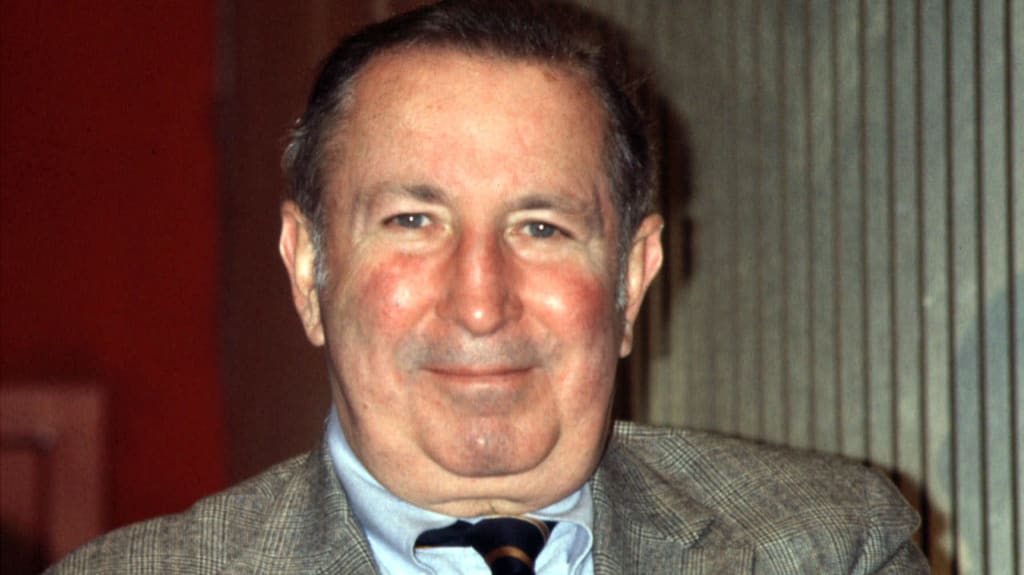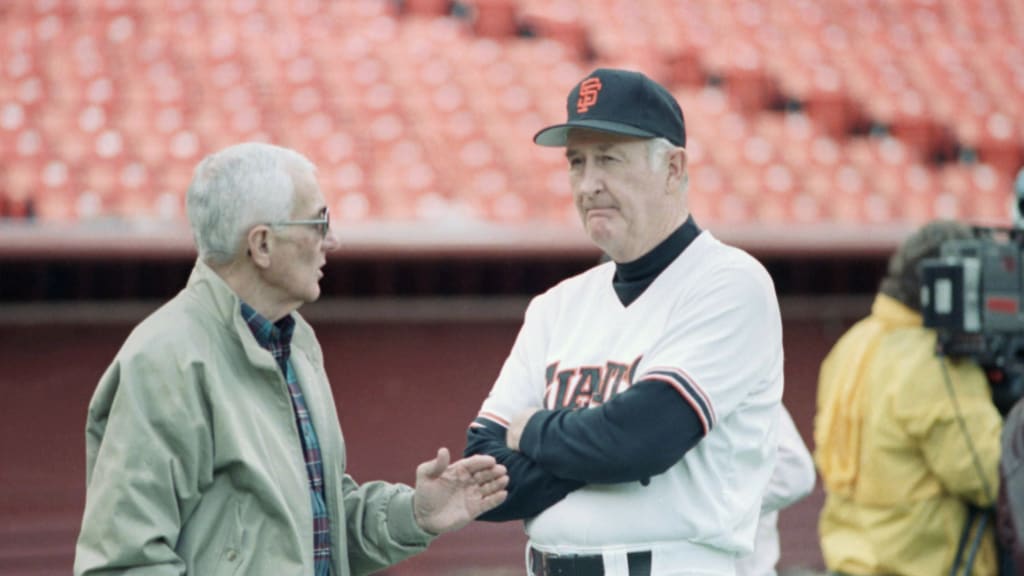
SAN FRANCISCO -- No one loves a good debate quite like baseball fans. With that in mind, we asked each of our beat reporters to rank the top executives, managers and players by position in the history of their franchise. These rankings are for fun and debate purposes only. We also asked fans to weigh in on Twitter.
Below is Maria Guardado’s ranking of the top three general managers in Giants history.
1. Brian Sabean, 1996-2014
Key fact: During Sabean’s 18-season stretch as general manager, the Giants joined the Cardinals and the Yankees as the only Major League clubs to make four or more World Series appearances.
Sabean presided over the most successful era in Giants history, constructing teams that captured three World Series championships, four National League pennants, five NL West titles and two NL Wild Card berths. The Giants posted an overall record of 1,556-1,358 (.534) under Sabean.
A former college baseball coach, Sabean began his front-office career as a scout for the Yankees, rising to become the club’s vice president of scouting and player development. When the Giants hired former Yankees general manager Bob Quinn to replace Al Rosen in 1993, Sabean joined his old boss in San Francisco as a key assistant.
Three years later, Sabean took over as the Giants’ general manager, inheriting a roster that was coming off three consecutive losing seasons. His first move was bold and deeply unpopular, as he sent beloved third baseman Matt Williams to the Indians in exchange for Jeff Kent, José Vizcaíno, Joe Roa and Julian Tavarez. The trade incited so much backlash that Sabean held a press conference in which he declared, “I am not an idiot.”
It didn’t take long for vindication to arrive. Kent blossomed into one of the most prolific offensive second basemen in baseball history. After finishing at the bottom of the division in 1996, the Giants won 90 games in ’97 to capture the NL West title.
Sabean continued to build around star slugger Barry Bonds by acquiring such veterans as J.T. Snow, Robb Nen, Ellis Burks, Andres Galarraga and Kenny Lofton. In 2002, the Giants came within one game of winning the World Series, though they fell to the Angels.
Sabean’s track record is not without its blemishes. In 2003, he traded future All-Stars Joe Nathan and Francisco Liriano to the Twins in exchange for catcher A.J. Pierzynski. Sabean also awarded a record-breaking contract to left-hander Barry Zito, who underwhelmed during his seven seasons with the Giants. But considering his longevity, notable missteps were uncommon.
After the Bonds era, Sabean focused on rebuilding the Giants’ farm system, drafting and developing the core of players who would lead the club to three World Series championships in 2010, ’12 and ’14. Sabean again showed a knack for adding the finishing touches to the roster, landing such key postseason contributors as Pat Burrell, Cody Ross, Marco Scutaro, Hunter Pence and Jake Peavy.
In April 2015, Sabean took a step back from leading the baseball operations department and named his longtime assistant Bobby Evans as the Giants’ new general manager. Last year, Sabean transitioned into a new role as an executive vice president, working on strategic initiatives as a senior advisor and evaluator.
2. Charles “Chub” Feeney, 1947-69
Key fact: Following his tenure with the Giants, Feeney served as the president of the National League for 17 years.
The nephew of former Giants owner Horace Stoneham, Feeney joined the club’s front office in 1946 at 24 and quickly worked his way up the organizational ranks. By ’50, he was effectively serving as the Giants’ general manager, a position he held until he departed in ’69 to run the NL. Under Feeney, the Giants won the ’54 World Series and captured NL pennants in ’51 and ’62, by which time the club had relocated from New York to San Francisco.
One of Feeney’s first big moves was dismissing Hall of Fame outfielder Mel Ott as the club’s manager and replacing him with Leo Durocher, who had previously skippered the rival Brooklyn Dodgers. Feeney also acquired Alvin Dark and Eddie Stanky from the Boston Braves, landing two key players who helped the Giants win the NL pennant in 1951.
In 1954, Feeney traded for left-hander Johnny Antonelli, who emerged as the ace of the squad that swept the Indians in the World Series and won the franchise’s final championship in New York. Feeney and Stoneham’s front office was also ahead of the curve when it came to international scouting, which helped bring Latin American icons such as Felipe Alou, Orlando Cepeda and Juan Marichal to the Giants.

3. Al Rosen, 1985-92
Key fact: Rosen spent 10 years as a slugging third baseman for the Indians and was unanimously voted the 1953 American League MVP.
After his decorated playing career ended in 1956, Rosen thought his life in baseball was over and explored new professional paths as a stock broker and casino executive. But he found his way back to the game in ’78, when George Steinbrenner appointed him the Yankees’ new president and chief operating officer. The Yankees won the World Series that year, but Rosen lasted only a year and a half in New York before resigning amid conflicts with Steinbrenner and manager Billy Martin.
After a stint as general manager of the Astros, Rosen joined the Giants in September 1985 and was tasked with reviving a franchise that was coming off a wretched 100-loss season. Rosen installed Roger Craig as San Francisco’s manager and promoted rookies Will Clark and Robby Thompson to the big league roster in ’86, sparking an immediate turnaround for the Giants. In 1987, the club won the NL West after Rosen executed a blockbuster July trade with the Padres that brought Kevin Mitchell, Dave Dravecky and Craig Lefferts to San Francisco.
In 1989, Rosen sent three players to the Phillies for Steve Bedrosian, who served as the closer for the club that won the NL pennant before falling to the A’s in the World Series. Rosen remained with the Giants until 1992, posting an overall record of 589-475 with the club.
Rosen, who died in 2015, also influenced the career of current Giants general manager Scott Harris. When Harris was in college at UCLA, his grandmother helped facilitate a meeting in Palm Springs with Rosen, who became a mentor and helped Harris land his first internship in baseball with the Nationals in 2008.
“I listened to his stories; I listened to his advice,” Harris said during his introductory press conference in November. “For some reason, he took a liking to me, so I stayed in contact with him. … We maintained a close relationship, and we would talk regularly on the phone. And those conversations have all been very heartwarming.”

